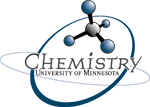Tyndall Effect (light scattering)
(blue sky-red sunset)
Equipment
One 1-liter tall form beaker, long stirring rod, overhead projector, mask for overhead with a hole cut in the center (the hole's diameter should be slighly smaller than the beaker's diameter).
Reagents
One liter of 0.025 M HCl solution, 6 mL of saturated sodium thiosulfate solution (Na2S2O3).
Presentation
- Place the mask on the overhead, center the hole on the projector.
- Add the HCl solution to the beaker, place the beaker over the hole in the mask.
- Focus the projector, so there is a bright spot on the screen.
- Add 6 mL of the thiosulfate solution to the beaker and stir. Remove the stirring rod and observe the beaker and the spot on the screen.
Hazards
Hydrochloric acid can irritate the skin. Hydrochloric acid vapors are extremely irritating to the eyes and respiratory system. Sodium thiosulfate may be harmful if swallowed or inhaled, may cause irritation to skin, eyes and respiratory tract.
Discussion
The first signs of turbidity occur in the beaker in approximately 1 to 1.5 minutes. The contents of the beaker will becomes more turbid as time goes on. The beaker will begin to glow and will glow more brighly as the turbidity increases. The spot on the screen will darken and take on a reddish-orange tint. Eventually, the spot will darken completely (in approximately 4.5 minutes). These effects result from the light being scattered by colloidal particles of sulfur. these sulfur particles are generated via the following reaction:
S2O32-(aq) + H+(aq) ® S(colloidal) + HSO3-(aq)
A little time is required to produce colloidal particles of sufficient size to noticably scatter, so you get to see the gradual increase of the scattering effect. Scattering intensity is proportional to the fourth power of the frequency of the light being scattered. This means that blue light has a more intense scattering than red light. As the blue light is scattered, the beaker takes on a blueish glow and the spot of light reaching the screen has the blue removed from it and becomes more reddish. When there are enough colloidal particles in the solution, no light gets through and the spot on the screen darkens to black. A similar effect can be seen in the sky. Particles in the atmosphere scatter the blue wavelength and we see a blue sky. At sunrise and sunset the sunlight travels through the maximum amount of atmosphere to reach your eye, during this journey, the greatest amounts of blue wavelengths are scattered and the light that reaches your eye is correspondingly richer in the red wavelengths. If the number of scattering particles is increased from sources such as forest fires or volcanic eruptions, you get spectacularly red sunrises and sunsets.

References
- B. Z. Shakhashiri, Chemical Demonstrations, A Handbook for Teachers of Chemistry, Wisconsin, 1989, Vol.3, p.353-357
Request a demonstration
The University of Minnesota is an equal opportunity educator and employer.
Copyright 2000 by the Regents of the University of Minnesota.
This page was last modified 6/18/2002.
For questions or comments, contact
Joseph Franek.
